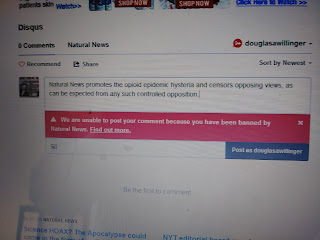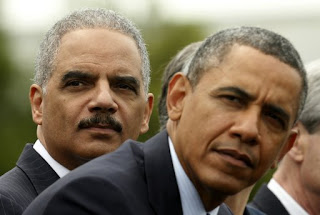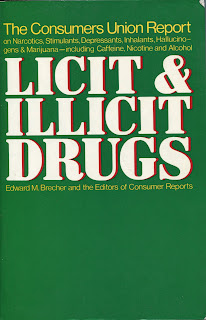Dale Gieringer On The Slippery Slope to Prohibition
How the 1906 'Pure Foods and Drug Act' practically empowered the U.S. Department of Agriculture to ban dilute cocaine, thus shifting the market of that drug to the infinitely more dangerous concentrated forms ....
... and to go further, how lying about cocaine was meant to protect markets for Tobacco. That was evident with the 1906 Act's limiting the USDA's authority over substances in the U.S. Pharmacopoeia, from which Tobacco had been deleted in 1905, and the 1910 USDA Farmers' Bulletin article "Habit Forming Agents- Their Sale and Use a Menace to the Public Welfare", which decried the use of Coca against Tobacco, so described as "what is commonly believed to be a comparatively harmless habit" - authored by L.F. Kebler. Yet it was Kebler, who in 1912 testified at a U.S. House of Representatives COMMlTTEE ON lNTERSTATE AND FORElGN COMMERCE hearing on the Food and Drug Act, that "tobacco and preparations of tobacco contain arsenic and lead, due to the fact that there has been used in the growing of tobacco lead arsenate, a chemical to deter or kill certain pests. As a matter of fact, some tobacco contains a goodly quantity of arsenic.... most of them would be dangerous to health".
... and to go further, how lying about cocaine was meant to protect markets for Tobacco. That was evident with the 1906 Act's limiting the USDA's authority over substances in the U.S. Pharmacopoeia, from which Tobacco had been deleted in 1905, and the 1910 USDA Farmers' Bulletin article "Habit Forming Agents- Their Sale and Use a Menace to the Public Welfare", which decried the use of Coca against Tobacco, so described as "what is commonly believed to be a comparatively harmless habit" - authored by L.F. Kebler. Yet it was Kebler, who in 1912 testified at a U.S. House of Representatives COMMlTTEE ON lNTERSTATE AND FORElGN COMMERCE hearing on the Food and Drug Act, that "tobacco and preparations of tobacco contain arsenic and lead, due to the fact that there has been used in the growing of tobacco lead arsenate, a chemical to deter or kill certain pests. As a matter of fact, some tobacco contains a goodly quantity of arsenic.... most of them would be dangerous to health".
http://www.drugsense.org/dpfca/Liberty1906Centennial.htm
[excerpt]
One of the [1906 Food and Drug] act's central provisions was to require that medicines bear warning labels if they contained habit-forming drugs such as alcohol, opiates, cocaine, cannabis, or chloral hydrate (plus the now-forgotten alpha- and beta-eucaine, chloroform, and acetanilide). It further required that the quantities of these drugs be specified on the label. In essence, this was a "truth in labeling" policy, which, being informative, not prohibitive, was altogether consistent with the principles of J.S. Mill. Contemporary observers credited the act with a substantial decline in the use of patent medicines with dangerous intoxicants.5
However, the act had a dark side as well, as it put the power to make decisions about what drugs could be sold into the hands of a new federal regulatory agency — the Department of Agriculture's Bureau of Chemistry, the predecessor of today's FDA. In specific, the Bureau was empowered to remove products that it found to be "adulterated" with substances "deleterious" to human health, and to ban the importation of any drug deemed "dangerous to the health of the people of the United States." The definition of such terms inevitably involved subjective value judgments, which under the act would be determined by federal bureaucrats instead of individual consumers and producers in the market. The dangers of this arrangement were aptly pointed out by Sen. Nelson Aldrich (grandfather of Gov. Nelson Aldrich Rockefeller, the eponymous author of New York's punitive drug law), who warned that "the liberty of all the people of the United States" would be undermined by "chemists of the Agriculture Department" with an interest in regulation.6 No doubt Sen. Aldrich's remarks were aimed at the Bureau's crusading director, Harvey Washington Wiley, who had championed the new law. An aggressive proponent of regulation, Wiley was a forerunner of today's consumer protectionists, highly averse to chemical additives, inclined to exaggerating scientific evidence about their dangers, and prohibitionist with regards to many substances, including alcohol. Taking an aggressive interpretation of the act's provisions regarding "adulteration," Wiley sought to have several popular ingredients banned from the food supply, among them saccharin, sodium benzoate, and caffeine. His efforts wound up discrediting him with President Theodore Roosevelt, who remarked, "Anybody who says saccharin is injurious to health is an idiot."7
However, Wiley was more successful with cocaine, which enjoyed popularity as an ingredient in several tonics and beverages but had recently come into disrepute. Cocaine is derived from the coca leaf, used since time immemorial by South American Indians with no evident ill effects. It was first popularized in the form of relatively mild tonics such as the famous Vin Mariani — endorsed by Thomas Edison, Pope Leo XIII, and President McKinley — and the original Coca-Cola. Like the coca tea enjoyed in the Andes, these beverages contained low levels of cocaine, and produced no evident ill effects.
However, problems began to arise with the introduction of more potent cocaine in pure, powdered form following the announcement of its remarkable pharmaceutical properties by Carl Koller in 1884. A brief flurry of medical enthusiasm was soon dampened by disturbing reports of addiction, as previously normal patients became transformed into crazed "cocaine fiends." In the South, cocaine was blamed for inciting violent behavior in blacks. In the nation's capital, cocaine was seen as "one of the growing evils of the city among the lower classes," and became a motivating factor in the District Commissioners' push for the D.C. Pharmacy and Poisons Act.8 By 1906, nearly half the states had laws prohibiting the sale of cocaine except on a doctor's prescription — essentially the model followed in the Harrison Act.
Although the Pure Food and Drugs Act was not prima facie a prohibition law, its provisions regarding food adulteration gave the Bureau leverage to intervene in the marketplace. In specific, the act defined adulterants to include any "deleterious ingredient" that might render the article "injurious to health."
Seizing on this provision, Wiley declared cocaine to be an "adulterant" and sued to have it removed from beverages. At no point did Wiley ever show that the low levels of cocaine in coca beverages were actually injurious to health. Indeed, coca beverages and leaf remain legal to this day in the Andean countries, where they are thought to help stave off fatigue, hunger, and diabetes. Nevertheless, Wiley succeeded in pressuring manufacturers to withdraw all cocaine from their beverages.
Ironically, that left only the more potent, addictive form of cocaine available on the market as a pharmaceutical drug. Although cocaine was ultimately restricted to prescription-only use under the Harrison Act, nothing could stop it from leaking out into the nonmedical black market, eventually metastasizing into other countries and becoming one of the world's largest criminal enterprises. Wiley's ban on coca would eventually be incorporated into international law by the Single Convention Treaty (1961), at the insistence of U.S. drug bureaucrats. While criminalization of the coca trade has effectively "protected" American consumers from harmless coca beverages, it has left millions more exposed to illicit, high-potency cocaine. Meanwhile, it has inflamed a violent war in Latin America that has cost U.S. taxpayers billions of dollars, claimed thousands of casualties, and injected corruption, violence, gangsterism, and criminality into what was a peaceful and lawful business a century ago.



Comments
Post a Comment